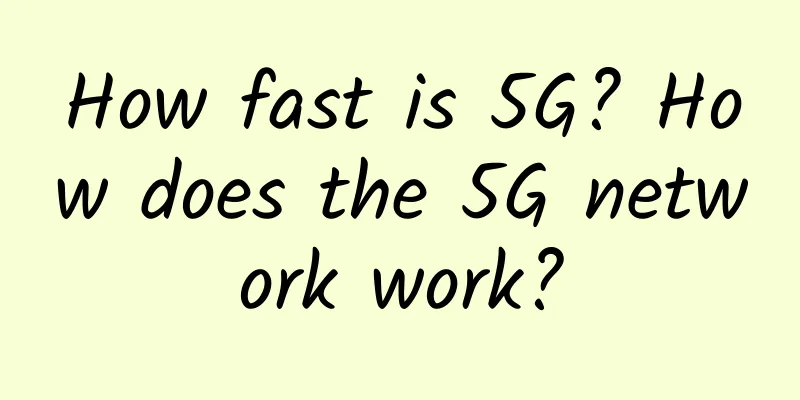MEC – Are we getting closer?!

|
Multi-access edge computing (MEC) or previously mobile edge computing has been a popular term in the past few years, especially as 5G technology entered the commercial stage last year. MEC is often used to describe the concept of pushing services to the edge of the network, and there is conflict with other terms such as fog computing. As this technology is associated with infrastructure technologies such as 5G and containers, various confusions are increasing. This article demystifies this technology from the perspective of telecommunications companies.
The definition and framework of MEC comes from ETSI, the European Telecommunications Standards Institute, as part of the MEC Industry Specification Group (ISG), which began work in December 2014. Below is the definition from ETSI. Multi-access edge computing (MEC) provides application developers and content providers with cloud computing capabilities and an IT service environment at the edge of the network. This environment is characterized by ultra-low latency and high bandwidth as well as real-time access to wireless network information that applications can utilize. This definition lays out a roadmap for telecom operators to deliver cloud computing capabilities at the edge through an IaaS/PaaS model. So let’s stop here and point out that the concept of MEC is not combined with 5G, although it can play an important role in meeting the ultra-latency and gigabit experience requirements of 5G. ETSI MEC initially provided a framework and an interesting reference architecture, as shown below. The specification was released in March 2016 and has raised many question marks among mobile operators. Some of the frequently asked questions are listed below, along with the author’s perspective. What is the MEC host location in the network? Can it exist at the BTS? Regional DC? Can it reside at the end-user premises? MEC is considered to be one step away from the end user, but it is not explicitly stated that it should reside in the BTS or Edge DC. Therefore, we can assume that it does not touch the terminal device or IoT device, it is just one hop in the network, matching the BTS and Edge DC. What are the mechanisms for placing the data plane of network functions at the edge? With CUPS, it is now possible to deploy user plane functions separately at the edge. I think 5G UPF and SGW/PGW-U are perfectly aligned. In addition, with proper service/resource orchestration, some VNFs can be deployed at the edge, such as Gi-LAN functions and value-added services (caching, FW, Parental Control, etc.). What services (MEC Apps) can be run on a MEC host, and do they require special infrastructure requirements? These can be third-party applications developed by third-party developers. So, operators can basically provide IaaS/PaaS to those companies or developers to develop special-purpose applications that require MEC characteristics such as ultra-latency. VR/AR, IoT, and V2I applications are an example. For infrastructure, these applications will most likely be container-based. Therefore, operators must leverage environments that can host and “manage” containers. How does a VIM (such as Openstack) manage a remote infrastructure environment with hundreds or thousands of DCs? It's not clear, there are some open source initiatives, groups and forums, but nothing concrete so far. Two trends:
What kind of infrastructure should be deployed at the edge? It should be lightweight, small footprint, and cheap infrastructure with low power consumption and relatively good computing power. White boxes seem to be a suitable solution. Will the workload run on a VM? Container? Bare metal? For some reason, containers are always in the table above and below MEC workloads. However, workloads can run on anything. The above figure is the survey results of SDx Central's 2017 Edge Computing and MEC Report, where the question is "What will be used to manage edge platforms?" The respondents are from vendors and operator teams. Is MEC a component of 5G? It can be, but is it mandatory? I don't think so. The 5G ITU requirements are very clear that if operators manage to provide 5G services/features to end users, they don't have to deploy ETSI MEC concepts. There is no close connection between them. How does MEC relate or match up with the ETSI NFV reference architecture? One of the recently released ETSI MEC specifications is GR MEC 017 Mobile Edge Computing (MEC); Deploying Mobile Edge Computing in an NFV Environment. Interestingly, new network elements have been introduced, such as MEAO, Multi-Access Edge Application Orchestration, which raises many questions about the functionality of this orchestration and how it integrates with NFVO. MEAO should manage the uploading of mobile edge application packages, resource orchestration across edge DCs, selection of appropriate mobile edge hosts for application instantiation, and triggering of application instantiation, termination, and relocation using the following reference points.
It is too early to see this integration commercialized. Like any other standard or open source initiative, it will require community support. Original link: https://www.netmanias.com/en/?m=view&id=blog&no=13893 |
<<: Four major trends in China's Internet development
>>: How SD-WAN is reconfiguring enterprise services
Recommend
Ten Tips to Simplify Fiber Optic Cable Installation
Installing fiber optic cable is a complex and tim...
Wu Jingtao returns to F5 as new CTO to explain F5's future direction
[51CTO.com original article] Wu Jingtao is the ki...
Why migrate to UCaaS? The reasons are many and obvious
[[395094]] Research shows that the future of ente...
H3C: Using Converged Network Technology to Support Digital Transformation of All-Scenario Services in Smart Hospitals
Hospitals are the core of protecting the health a...
Inventory: Ten key steps in the development of quantum communication in China, from following to partially leading
[[408654]] 01 Deceived-state quantum key distribu...
One can learn from others’ experience: How should the radio and television 5G core network be deployed?
In 2019, China Radio and Television, together wit...
Riverbed Releases SteelFusion 5.0, Adds Support for NAS Storage
[[185144]] Riverbed Technology, the application p...
Three major operators: New York Stock Exchange maintains delisting decision
On the evening of May 7, the three major operator...
Faced with Apple's competition for the live streaming platform, Yunfan accelerates the launch of the first H.265 live video transmission solution
Recently, media reported that Apple is rectifying...
Quickly understand the characteristics and differences of HTTP1.0 1.1 2.0 3.0
HTTP1.0 HTTP version 1.0 is a stateless, connecti...
To prevent 5G from the barrel effect, both Sub-6GHz and millimeter wave are indispensable
The wooden barrel effect is a well-known truth. 5...
Alibaba Cloud Golden Autumn Cloud Season, Cloud Server Flash Sale 2C2G5M Annual Payment Starting from 60 Yuan
Alibaba Cloud (aliyun) launched another Golden Au...
Combining VXLAN and EVPN
EVPN is one of the hottest network technologies i...
HostYun Japan Tokyo (Softbank + CMI) VPS simple test
Earlier this month, we shared information about H...
From 0G to 5G: How we got here and where we are going
Ah…the beauty of wireless convenience. Thanks to ...









